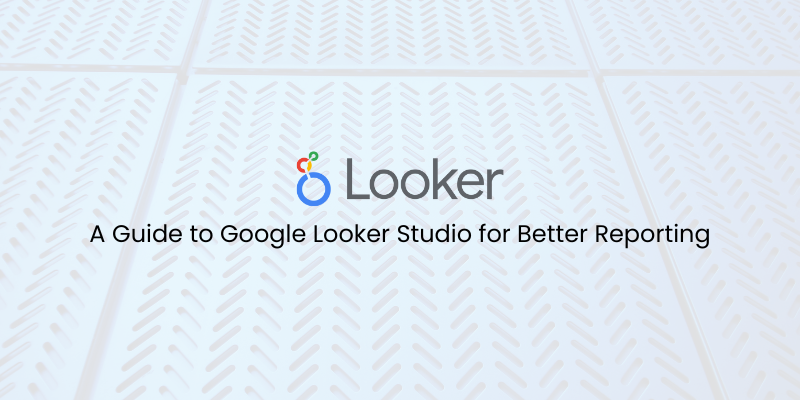In our data-driven society companies rely greatly on analysis to help them make educated decisions. Google Looker Studio (formerly Google Data Studio) is an extremely powerful tool that allows companies to analyze, visualize and communicate data in a seamless manner. This article explains how you can utilize Google Looker Studio for better reports, and help you realize the power of Google Looker Studio to fulfill your reporting needs.

What Is Google Looker Studio?
Google Looker Studio is a cloud-based tool for business intelligence that lets users create visually appealing, interactive dashboards as well as reports. The platform is incredibly powerful and integrates an array of data sources which makes it an ideal solution for companies looking to improve their reports.
Primary Features of Google Looker Studio
- Customizable dashboards Create custom dashboards that show the key important metrics for your company.
- Real-time Data: Access and visualize data in real-time for more efficient decision-making.
- Collaborative Reporting: Reports can be shared easily between clients or team members to ensure that everyone is on the same level.
- Integration Options: Join over 800 sources of data such as Google Analytics, Google Ads, BigQuery, and more.
Why Use Google Looker Studio for Reporting?
Effective reporting is essential to monitor the performance of a business, identifying trends and making decisions that are strategic. Google Looker Studio enhances this process by a variety of ways:
- Simplify Complex Data: It transforms raw data into simple visualizations that are simple to comprehend.
- Saves Time: Automate data updates and remove the requirement for manual reporting.
- Enhances the Collaboration of Teams: Share reports with just a few clicks, which allows more effective communication between teams.
- Improves Decision Making: Utilize real-time information to make quick, informed decisions.
Getting Started with Google Looker Studio
Step 1: Sign In and Set Up
To begin, go to Google the Looker Studio and sign in using Your Google account. Once you're logged in, it's possible to can start a new report or select from the templates available.
Step 2: Connect Your Data Sources
Google Looker Studio offers integration with a variety of data sources. These include:
- Google Analytics
- Google Sheets
- SQL databases
- Platforms for marketing (e.g., Facebook Ads, HubSpot)
Choose the data source you want to use and then authenticate the connection. This ensures a smooth data import into your reports.
Step 3: Design Your Dashboard
The design phase is about customizing your dashboard to fit the goals of your reporting.
- Make use of tables, charts or scorecards to visually represent information.
- Make use of the drag-and-drop interface to allow simple modification.
- Apply data science techniques to filter and display specific metrics based on user preferences.
Step 4: Customize Themes and Layouts
Google Looker Studio allows you to match the dashboard to your company's brand identity by modifying themes as well as fonts and colors. A professional layout does not just look appealing, but also improves the report's accessibility.
Step 5: Share and Collaborate
Once you have your report ready you can share it with the options to share it with your clients or colleagues. Reports can be shared by email or create a shareable hyperlink.
Best Practices for Using Google Looker Studio
To make the most from Google Looker Studio, keep these guidelines in your mind:
1. Define Your Objectives
Before you begin writing your report, determine the objectives you're trying to reach. It does not matter if it's tracking the traffic on websites or monitoring the performance of advertisements By setting clear goals, you can ensure that your reports are focused.
2. Choose Relevant Metrics
Be sure to keep your metrics clear by focusing on the metrics that are essential for your target audience. For example marketing teams could place a high value on metrics like conversion rates, whereas finance teams concentrate on trends in revenue.
3. Leverage Filters and Segments
Segments and filters allow you to drill down specific subsets of data. For instance, you could filter traffic to websites by type of device or region. Or, you can filter by campaign.
4. Regularly Update Your Data Sources
Make sure that the data you connect to sources are current to ensure accurate reports. The automated refresh of data is a reliable way to ensure that your information is up to date.
5. Optimize for SEO Reporting
If you are writing reports to aid in SEO analysis, make use of tools such as Google Search Console and Google Analytics. Concentrate on metrics like organic traffic, bounce rate and the ranking of keywords.
Common Challenges and Solutions
Although Google Looker Studio is a flexible tool, users might run into some difficulties:
- Problem: Data integration issues with third-party platforms.
- Solutions: Use connectors like Supermetrics or integrate APIs to provide an effortless data export.
- Challenge: Performance is slow when working with huge databases.
- Solutions: Enhance your queries as well as utilize aggregated data to increase speed.
- Challenge: Difficulty in designing complex dashboards.
- Solution: Use templates as well as community resource to guide you.
Key Benefits of Google Looker Studio
By adopting Google Looker Studio, businesses can:
- Consolidate data from multiple sources.
- Discover actionable insights with interactive visualizations.
- Increase productivity by automatizing the reporting process.
Conclusion
Google Looker Studio is an essential tool for companies looking to improve their processes for reporting. Its intuitive interface, a variety of capabilities, and numerous integrations, it is able to cater to different industries and needs for reporting. Following the guidelines and steps that are outlined in this article to maximize the full power that is Google Looker course and create powerful reports that help you make better choices.
If you're a marketing professional tracking campaign performance or an analyst who monitors business KPIs Google Looker Studio is your access to more effective reports and actionable data.